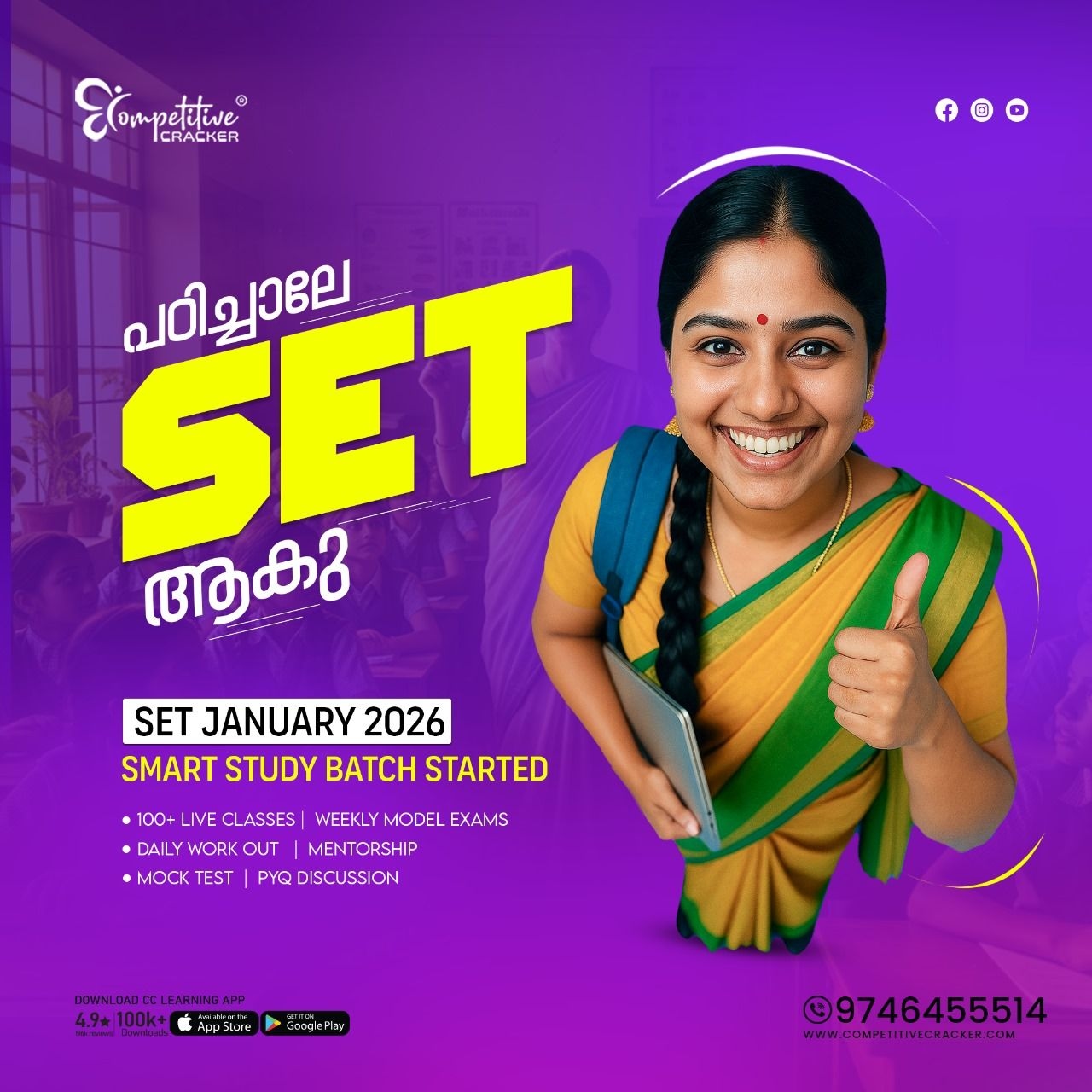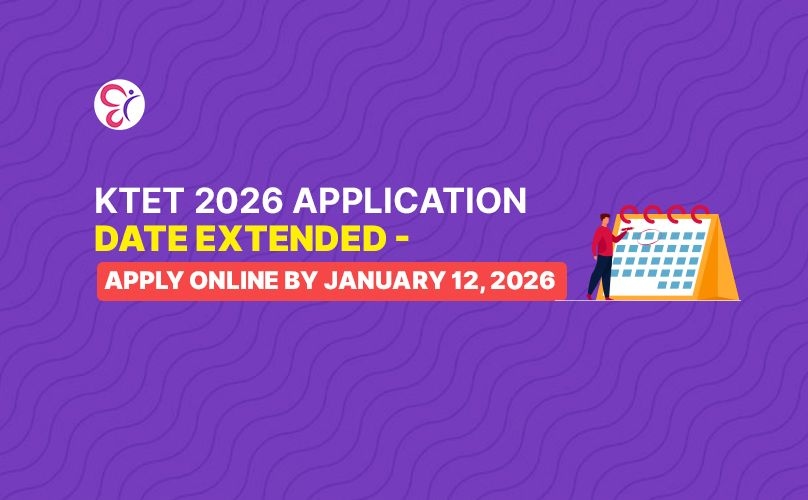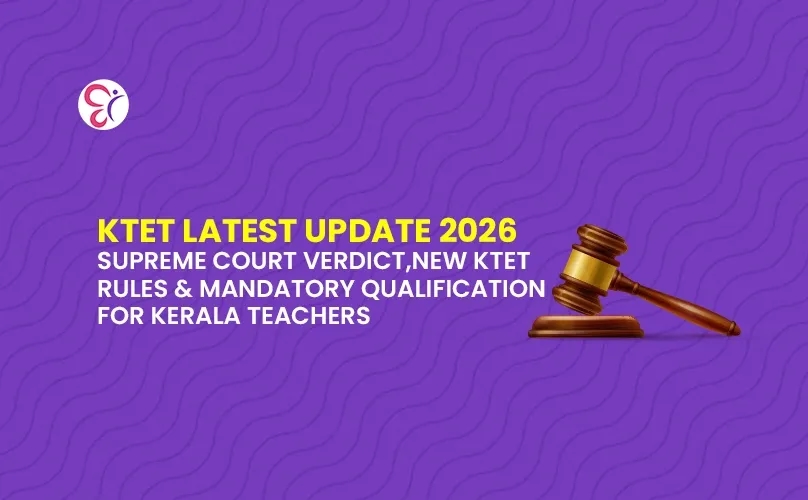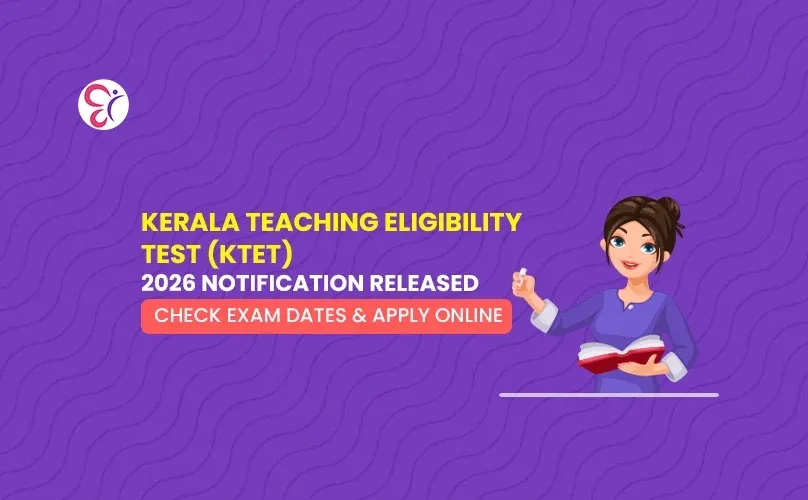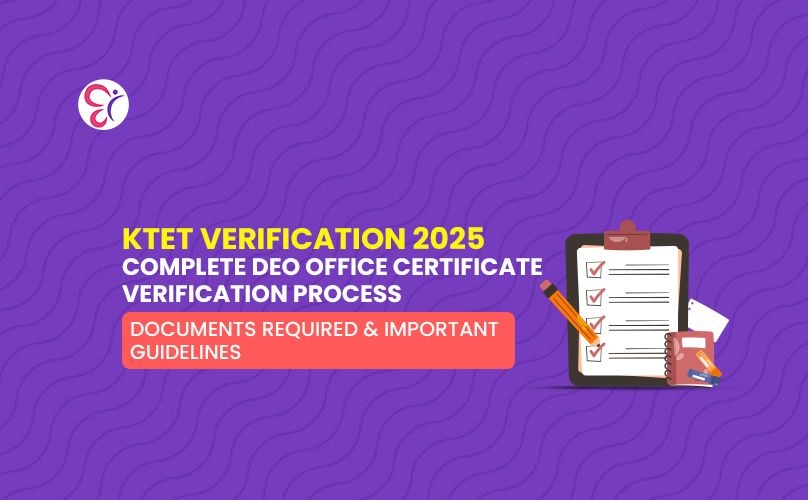KTET Category 2 Previous Year Question Papers

KTET 2023 Notification
KTET Notification 2023 was released on 31st October 2023. Apparently, from the new notice we can see that, this time KTET Exam Date is scheduled from 29/12/2023 (KTET Category 1 & 2) to 30/12/2023 (KTET Category 3 & 4). The duration of the exams is allotted as 2 ½ hours, which is confirmed to be executed from morning to noon and noon to evening for distinct exams. See the table below for KTET Category wise exam date.
| KTET Exam 2023: Important Dates | |||
| Category | Exam Date | Exam Duration | Time of exam |
KTET Category 1 Exam Date
|
29/12/2023 (Friday) |
2 ½ hours |
10:00am – 12:30pm |
KTET Category 2 Exam Date
|
29/12/2023 (Friday) |
2 ½ hours |
2:00pm – 4:00pm |
KTET Category 3 Exam Date |
30/12/2023(Saturday) |
2 ½ hours |
10:00am – 12:30pm |
KTET Category 4 Exam Date
|
30/12/2023(Saturday) |
2 ½ hours |
2:00pm – 4:00pm |
KTET 2025 Supreme Court Verdict – Full Details
KTET Category 2 Child Development and Pedagogy Questions
2022
- Odd one out of the following is:
- Rorschach Inkblot Test
- Thematic Apperception Test
- Word Association Test
- Cumulative Record
- A child who has experienced the working of toy cars with wheels will try to move other toys having wheels. That is, try to understand new situations based on existing knowledge. This process is known as:
- Assimilation
- Equilibration
- Organisation
- Empathy
- Which of the following is not a life skill among those suggested by World Health Organisation (WHO)?
- Self Awareness
- Creative Thinking
- Repression
- Empathy
- Which among the following are characteristics of hearing impaired child?
- Sit without attention
- Do not respond to question of others
- Observes the lip movement of people
- i) and ii) only
- ii) and iii) only
- i), ii) and iii)
- iii) only
- Name of the psychologist who related need for affiliation, power and achievement with motivation:
- Bruner
- Mc Clelland
- Vygotsky
- Ausubel
- How many disabilities are included in the list as per Rights of Persons with Disabilities (RPWD) Act – 2016?
- 7
- 21
- 20
- 23
- Who proposed the concept of multiple intelligence?
- Howard Gardner
- Raymond Cattell
- Sternberg
- Alfred Binet
- Concept formation takes place through Enactive stage, Iconic stage and symbolic stage. This opinion was put forward by:
- Jerom S. Bruner
- Vygotsky
- Piaget
- Sigmund Freud
- A child of 10 years old has a mental age of 8. What will be his intelligent quotient (IQ)?
- 80
- 125
- 100
- 90
- By repeating the process, the relation between stimulus and response strengthens, which law is related to this?
- Law of Readiness
- Law of Effect
- Law of Exercise
- Law of Closure
- Rate of growth is very high at infancy and shows a jump at teenage. Which principle of development is related to this fact?
- Development is continuous
- Development is directional
- Development is not linear but spiral
- Development is the product of heredity and environment
- The process of formation of strong and interrelated cognitive structure by the internal redistribution and addition of scheme is called:
- Maturation
- Organisation
- Assimilation
- Equilibrium
- In which psychological approach does the following belong to?
“personality, dynamics, structure of personality and psycho – sexual stage”
- Trait approach
- Psycho analysis approach
- Gestalt approach
- Humanistic approach
- Which among the following is not related to the concepts proposed by Vygotsky?
- Zone of proximal development
- Socio cultural learning theory
- Group learning
- Meta cognition
- The disorder arise due to less or abnormal production of haemoglobin is:
- Hermophilia
- Sickle cell disease
- Parkinson”s disease
- Thalassemia
- Language is a verbal behavior. It can be achieved by operant conditioning as any other behavior. This concept was proposed by:
- Albert Bandura
- B.F Skinner
- Bruner
- Vygotsky
- Some characteristics of a child are given below:
- Curious and asks many questions
- He his/her own ideas
- Has enough vocabulary converse like grown ups
Which category does the child belong?
- Hyper active
- Gifted child
- Slow learner
- Normal child
- Which of the following is not a reason for delayed motor development?
- Unhealthy body
- Excess nutritious food
- Lack of motivation
- Fear
- The different stages in “Herarchy of Needs proposed by Abraham Maslow are:
- Physiology needs
- Safety needs
- Esteem needs
- Love needs
The order of these needs from lower level to higher level is:
- 1,3,4,2
- 1,4,3,2
- 1,2,4,3
- 1,3,2,4
- Which among the following is a projective method?
- Sentence completion test
- Sociogram
- Check list
- Questionnaire
- The characteristics of a stage of cognitive development is given below:
- Can formulate hypothesis and analyse them
- Rationally solve abstract problems
Which is the stage of cognitive development?
- Sensory motor stage
- Pre- operational stage
- Concrete operational stage
- Formal operational stage
- A student got good score in unit test. Teacher give exemption to that student from writing assignment of copying the lesson to notebook. This is an example of:
- Positive reinforcement
- Incentive
- Punishment
- Reward
- Who proposed the ideas such as self concept, ideal self, and Real self in connection with personality?
- Carl Ransom Rogers
- Sigmund freud
- Wilhem Wundt
- Erickson
- ‘knowing our emotions’, ‘Managing our emotions’, ‘Dealing relation effectively’
These three are related to:
- Interpersonal intelligence
- Intrapersonal intelligence
- Emotional intelligence
- Naturalistic intelligence
- The exact and intensity of characteristics a person can be better obtained from:
- Check list
- Rating scale
- Opinionnaire
- Interview
- The learning curve given below indicates:
- Progress of learning is increasing continuously
- Progress of learning decreases
- Progress of learning is constant
- Progress of learning decreases at the beginning and then increases
- The learning disability related to reading is:
- Disleixa
- Disgraphia
- Dyscalculia
- Autism
- Which of the following is not a characteristic of infancy?
- Smiles at own image in mirror
- Responds to own name
- Shows likes and dislikes
- Tells long stories
- Which of the following is not a Gestalt law of learning?
- Law of similarity
- Law of proximity
- Law of closure
- Law of readiness
- A child exhibit expertise in making maps and playing musical instruments. What types of multiple intelligence are exhibited by this child?
- Linguistic intelligence and musical intelligence
- Visual – space intelligence and musical intelligence
- Bodily kinesthetic intelligence and interpersonal intelligence
- Existential intelligence and musical intelligence
Answers: 1.D 2.A 3.C 4.C 5.B 6.B 7.A 8.A 9.A 10.C 11.C 12.B 13.B 14.D 15.D 16.B 17.B 18.B 19.C 20.A 21.D 22.A 23.A 24.C 25.B 26.(wrong question- Question cancelled) 27.A 28.D 29.D 30.B
February 2022
- Initiative actions by identifying one’s strength and weaknesses and to utilize the maximum potential to attain self actualization can be termed in relation to Multiple Intelligence as:
- Visual and Spatial Intelligence
- Naturalistic intelligence
- Intrapersonal Intelligence
- Interpersonal Intelligence
- Thinking about one’s own thinking is called:
- Cognition
- Dual cognition
- Mega Cognition
- Meta cognition
- Miya teacher discussed the concepts related with the science lesson in the class. Then she gave some activities to the students to undertake in small groups. The purpose of the teacher here is:
- To increase the sociability of the students
- To enable all students to attain the concepts
- Those who have doubts can clear them in small groups
- All of the above
- The ideas and concepts developed through learning are critically examined by the learner and changes are acquired. This is another type of assessment known as
- Self assessment
- Assessment as learning
- Assessment of learning
- Assessment for learning
- Which of the following is not true with regard to development?
- Development is based on maturation and learning
- Development is possible only through growth
- Development is qualitative
- Development factors are interrelated
- Which type of additional activities needs to be provided by the teacher to the gifted children?
- Simple activities
- Difficult activities
- Enriched and challenged activities
- All the above
- Jyothish was unable to answer most of the questions in the Maths examination. He was of the opinion that the questions – most of them were out of syllabus. Which defence mechanism is used by Jyothish?
- Compensation
- Repression
- Rationalisation
- Sublimation
- Sanju a ten year old student is fond of cricket. He is a good batter and a spin bowler. He studied the fundamentals of cricket by himself and started playing with the senior players. Now he is in the Kerala State Junior cricket team. It is a great moment for his school. In which record of the school, the name of Sanju may be noted?
- Cumulative record
- Anecdotal record
- Portfolio
- Logbook
- Thought and its by- product knowledge are not self developed. They are formed through the culture and various activities of the society in which the child belongs to. This Vygotskian approach is called:
- Behaviouristic approach
- Social contructivistic approach
- Humanistic approach
- Environmental approach
- Which type of questions is used to measure the language capability, depth of reading and systematic presentation of ideas of learner?
- Short answer type questions
- Essay type questions
- Multiple Choice Questions
- Objective type questions
- Geli is making a paper boat with the help of a TV programme following various steps. She also wrote the various steps in her notebook. Thus she was able to keep the steps in memory. Then she demonstrated the preparation to her friends. All of her friends appreciated the performance. Whose learning theory is applied here?
- B.F Skinner
- Eric Erickson
- Albert Bandura
- Lawrence Kohlberg
- Teacher provided an activity in the class V to add 3 balls and 4 balls to give 7 balls. Then wrote 4 + 3 = 7 in the black board. By observing this, Mili immediately responded, ‘then 7-3 will be equal to 4, is it’. In which cognitive development stage of Jean Piaget is Mili now?
- Sensory motor stage
- Pre-operational stage
- Concrete operational stage
- Formal operational stage
- In the study of personality in post humanistic perspectives personal judgement of worthiness that is expressed in the attitudes the individual holds towards himself/herself is termed as:
- Ideal self
- Real self
- Self actualization
- Self esteem
- For enabling better learning among the following is essential for the teacher?
- Knowledge about the learner
- Through content knowledge
- Knowledge about various transactional modalities
- All the above
- Which of the following is not a factor to define a matured personality proposed by Willard Allport?
- Extended self
- Self Regulation
- Realistic perception
- Unconditional positive regard
- Persons subjective thoughts and stands are given much importance the person centered theory. This theory was proposed by:
- Karl Rogers
- Willard Allport
- Abraham Maslow
- R.B Cattell
- Stable emotional performance, novel – imaginations, growth of scientific thinking, strong bond and play with same age group, increased sportsman spirit and courage are the peculiarities of which stage of child development?
- Infacy
- Middle childhood
- Later childhood
- Adolescence
- Teacher showed a picture in the classroom. Then told the students to suggest a suitable title to it. Which particular potential of the learner is assessed by the teacher here?
- Creativity
- Attitude
- Memory
- Interest
- Which one of the following is the third stage in the need hierarchy theory proposed by Abraham Maslow?
- Basic needs
- Love and belongingness
- Esteem need
- Self actualization
- In the psycho-social learning theory of Eric Erickson, the name for the developmental stage of 6 – 12 years age is:
- Trust vs Mistrust
- Autonomy vs inferiority
- Initiate vs guilt
- Industry vs Inferoirity
- A youtube channel was started by the general education department during the covid period for promoting the learning of children with special needs. What is the name of this youtube channel?
- Ganany Prabha
- Jyothirmayi
- Victers
- Changathi
- Hearing impaired students use which language for communication?
- Machine language
- Sign language
- Brail
- All the above
- Sini learns the questions with in no time, but Mini takes a lot of time to learn the developmental principle of:
- Continuity
- General to specific
- Individual difference
- Inter – relationship
- Jean Piaget opined that ‘Schemas’ are concepts which evolve and develop through 2 complementary systems. Name those 2 systems.
- Accommodation and disequilibrium
- Accommodation and equilibrium
- Assimilation and accommodation
- Assimilation and equilibrium
- Based on Gestalt theory, learning in children is most effective through:
- Repeated learning method
- Problem solving method
- Trial and error method
- Conditioning method
- Compared to intelligent quotient (IQ), the emotional quotient (EQ) has an important role in the success of the life of people. This was opined by:
- Howard Gardner
- Daniel Goleman
- Albert Binet
- E.L Thorndike
- Every new born child has an innate mental structure responsible for Language development called ‘Language Acquisition Device’ Who suggested this?
- Jean Piaget
- Lev Vygotsky
- Noam Chomsky
- Jerome S. Bruner
- In the concept formation process of learning, there are three important stages called enactive stage, iconic stage and symbolic stage. This was proposed by:
- Ausubel
- Lev Vygotsky
- Jean Piaget
- Jerome S. Bruner
- Jojy is a fifth standard student. In the Maths class, most of the time the numbers told by the teacher is wrongly written by him. For example the number 678 will be written as 768 or 876. Name this learning disability.
- Dyslexia
- Dyscalculia
- Dyspraxia
- Dysnomia
- The mental age of Femina is greater than her chronological age. Then which of the following is true?
- The IQ of Femina is more than 100.
- The IQ of Femina is 100
- The IQ of Femina is less than 100.
- The IQ of Femina is 90.
Answers: 1.C 2.D 3.D 4.B 5.B 6.C 7.C 8.B 9.B 10.B 11.C 12.C 13.D 14.D 15.D 16.A 17.C 18.A 19.B 20.D 21.B 22.B 23.C 24.C 25.B 26.B 27.C 28.D 29.B 30.A
KTET Category 2 Mathematics Questions
Click the link below to download KTET category 2 Mathematics questions
KTET Category 2 Environmental Studies Questions
Click the link below to download KTET category 2 Environmental studies questions
KTET Category 2 Malayalam Questions
Click the link below to download KTET category 2 Malayalam questions
KTET Category 2 English Questions
Click the link below to download KTET category 2 English questions
Trending Updates
